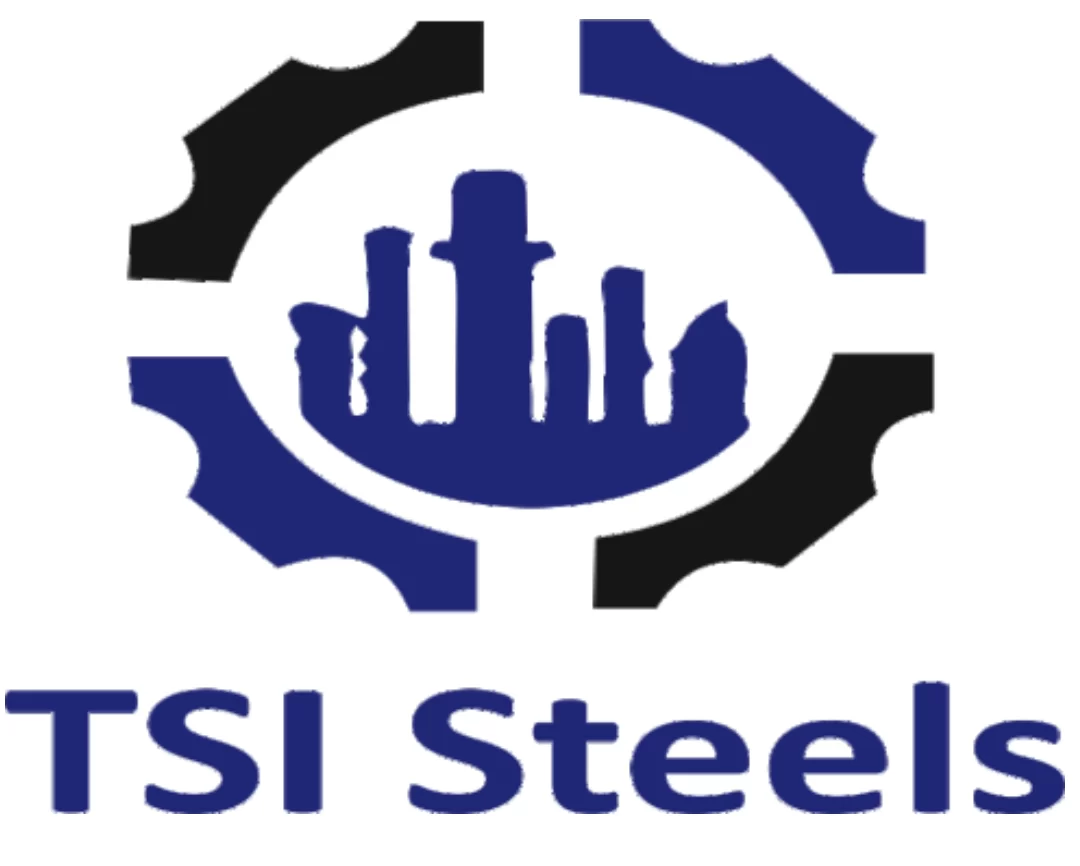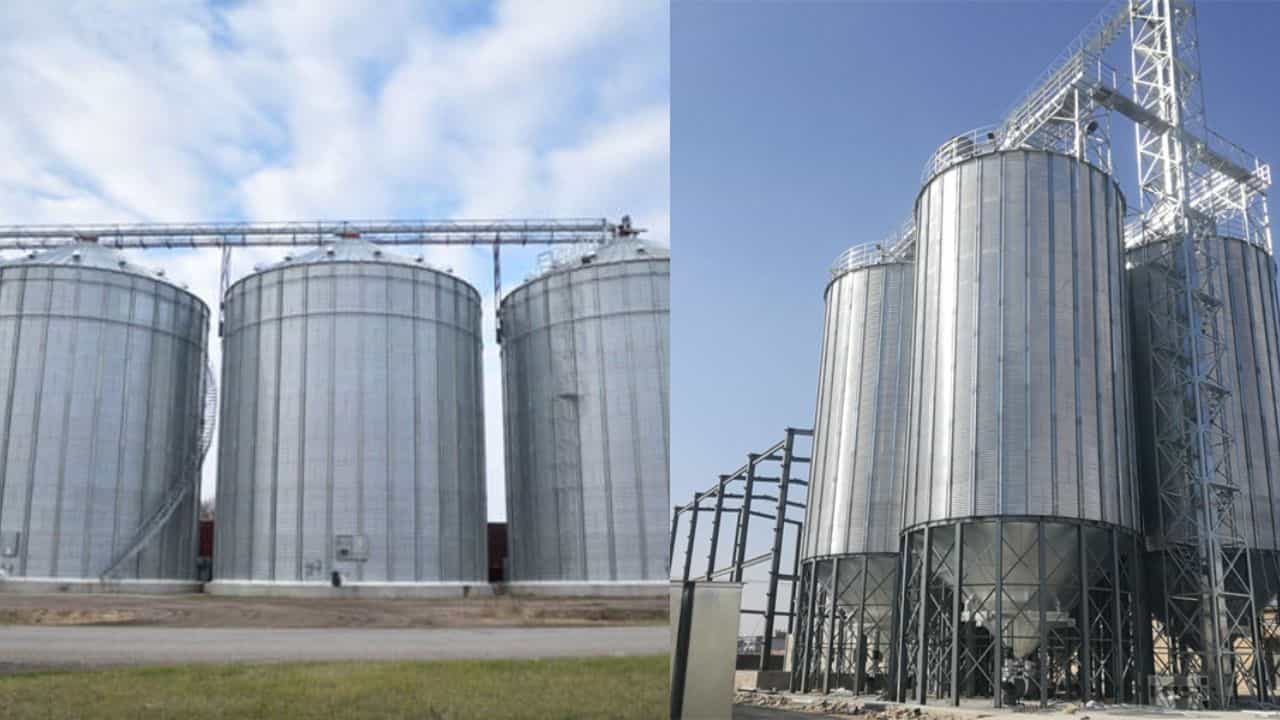When it comes to storing bulk materials such as grain, feed, or cement, silos are essential for maintaining quality and maximizing efficiency. When we consider grain storage solutions, two prominent types of silos come to mind: Hopper Bottom Silos and Flat Bottom Silos. Each type has its unique design, advantages, and applications, making them suitable for different operational needs. While both serve similar purposes, they have distinct features and are suited for different applications. In this blog, we’ll explore the differences between a hopper bottom silo and a flat bottom silo, and how TSI Steels can provide tailored solutions to suit your specific storage needs.
What is a Hopper Bottom Silo?
A hopper bottom silo is a silo that has a conical or funnel-shaped base, designed to help materials flow smoothly towards the discharge point at the bottom. This design is ideal for materials that need to be discharged frequently or that tend to stick or clump together, such as grains, fertilizers, and animal feed.
The key advantage of a hopper bottom silo is its ability to facilitate gravity-based unloading. The conical shape ensures that materials naturally flow towards the center, making it easier to discharge them without the need for additional mechanical equipment like augers or conveyors.
We offer a range of hopper bottom silos built with durable, high-quality materials that ensure longevity and consistent performance. Our silos are engineered to handle a variety of bulk materials efficiently while maintaining the highest standards of safety and reliability.
What is a Flat Bottom Silo?
A flat bottom silo, horizontal base and a cylindrical design that allows for greater overall storage capacity. This type of silo is most commonly found in agricultural, industrial, and food industries where bulk storage is needed for extended periods. The materials stored in a flat bottom silo are often more stable and do not need to be frequently discharged. Flat bottom silos are often equipped with internal augers, conveyors, or other mechanisms to facilitate material discharge, as gravity alone may not be sufficient to move the stored contents.
The flat base design of the silo means that it relies on additional mechanical systems, such as conveyors, augers, or aerators, to facilitate the discharge of materials. However, flat bottom silos offer greater storage capacity because they can be constructed to accommodate larger volumes of material.
TSI Steels provides top-of-the-line flat bottom silos that are designed for optimal storage and easy handling. Whether you need to store grains, seeds, or other bulk materials, our flat bottom silos are built to meet your exact requirements while ensuring efficiency and reducing operational costs.
Key Differences Between Hopper Bottom Silo and Flat Bottom Silo
Now that we understand the basic characteristics of each type of silo, let’s delve into the main differences between a hopper bottom silo and a flat bottom silo:
1. Design and Structure
- Hopper Bottom Silo: Features a conical or funnel-shaped base that allows materials to flow toward the center for easy discharge. This design is ideal for materials that require frequent unloading.
- Flat Bottom Silo: Has a flat base, allowing for a larger storage area. Discharging materials from a flat bottom silo requires mechanical systems to facilitate the process.
2. Discharge Mechanism
- Hopper Bottom Silo: The conical shape of the silo naturally helps in gravity-based unloading, making it suitable for materials like grains, powders, and animal feed that flow easily.
- Flat Bottom Silo: Requires mechanical aid, such as augers, conveyors, or aerators, for discharging stored materials.
3. Storage Capacity
- Hopper Bottom Silo: Typically smaller in size and ideal for materials that need to be emptied frequently or on demand.
- Flat Bottom Silo: Offers larger storage capacity, making it suitable for long-term storage of bulk materials.
4. Material Types
- Hopper Bottom Silo: Best suited for materials that flow easily and are regularly emptied, such as grain, feed, or pellets.
- Flat Bottom Silo: Suitable for bulk materials that are stored for extended periods, including grain, rice, seeds, and other dry materials.
5. Application
- Hopper Bottom Silo: Commonly used in small- to medium-sized operations that need to frequently unload materials.
- Flat Bottom Silo: Used for larger-scale operations where long-term storage and high-volume capacity are key factors.
Which One Should You Choose?
The decision between a hopper bottom silo and a flat bottom silo largely depends on your specific needs for storage, handling, and discharge.
- Choose a Hopper Bottom Silo if you need:
- Frequent material discharge
- Easy flow and gravity-based unloading
- A smaller storage capacity with a quick turnaround
- Choose a Flat Bottom Silo if you need:
- Larger storage capacity
- Long-term storage with minimal need for frequent discharges
- A silo designed for bulk storage of materials that are stable and not prone to clumping
Why Choose TSI Steels?
At TSI Steels, we understand that choosing the right silo is crucial for optimizing your operations. As experts in the design and manufacturing of both hopper bottom silos and flat bottom silos, we offer tailored solutions for a wide range of industries, from agriculture to food processing and construction. Our silos are built with high-strength materials and are designed to withstand harsh conditions, ensuring long-term durability and minimal maintenance.
Our team of experts at TSI Steels can help you assess your needs, choose the right type of silo, and implement a storage solution that will increase efficiency and reduce operational costs. Whether you need a hopper bottom silo for easy unloading or a flat bottom silo for high-volume storage, we have the right product for you.
Conclusion
When it comes to selecting the right silo for your storage needs, both hopper bottom silos and flat bottom silos have their unique advantages. TSI Steels is committed to providing high-quality, reliable silos that are tailored to meet the demands of your industry. Whether you’re handling grains, seeds, or other bulk materials, we offer the best-in-class solutions to enhance your operations. We manufactured the best hopper bottom silos and flat bottom silos, which provided good results to our customers and made our customers happy. When customers praise our work then the real success of our work.

